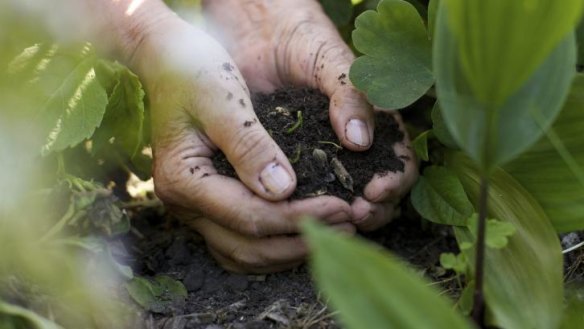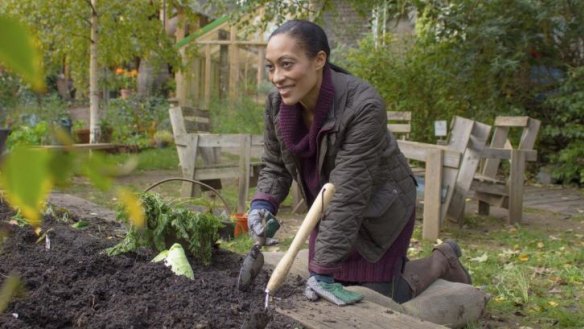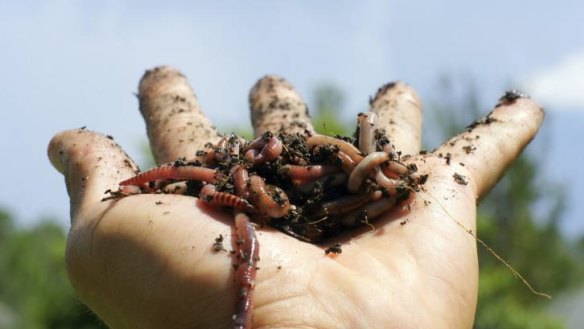Spoil your soil, reap the benefits

During the winter days, we have the opportunity to see the colours of many wonderful birds in our gardens, as the empty branches face the winter sun. In our orchard we have families of crimson rosellas, green parrots, blue wrens and the small yellow finches that flit around in the morning light. The magpies are out searching for insects in the grass and preparing to welcome new babies into the cycle of life. A family of kookaburras have made one of our big river gums their home and just recently some robin red breasts have been spotted on the branches of our apple trees.
Such beauty is wonderful. The environment is very important to the creatures' well-being. Along with frogs croaking near the flowing streams, the small birds are a good indicator of a healthy environment. Insect eating birds are among the first casualties if the environment is heavily polluted and strong chemicals reside in the soil. We belong to the National Association of Sustainable Agriculture, so our farming practices are geared to the long-term benefit of the land.
Below ground level it is just as important to keep the soil healthy because it is home to millions of micro-organisms, fungi and earthworms. Plant foods come from mineral particles and from organic matter. Plants have a very symbiotic relationship with these micro-organisms: the nutrients the plants need must first pass through a soil organism in order to become plant-accessible. These tiny micro-organisms need food, water and plenty of oxygen to take in soil nutrients and transform them.

We have a very thin top soil layer in much of Australia and this is compounded by many construction firms who strip away that layer for convenience when levelling out building sites. Canberra region soils contain much clay but natural surface soils may also contain a good proportion of weathered granite or silt particles. The underlying clay soil does contain a reasonable percentage of mineral foods but the very nature of clay restricts the plants from accessing these nutrients.
The ideal is to have a mix of clay particles, larger gritty particles and lots of organic matter, so that excess water can drain away. Adding gypsum to heavy clay soils will help the clay particles to aggregate and will reduce the sodium levels of the soil. Where you have dense clay you could consider lightening the soil texture by mixing in river sand but to make much of an impact you might need one or two trailer loads, well dug in, for a large backyard area.
The best way to build up the humus content of soil is by adding compost, animal manures and other decomposing organic materials. Humus is the ‘end product’ coming from the breakdown of organic materials and the fine clay particles will attach to small particles of humus. Friable soil that contains ample supplies of humus will keep on providing a good living environment for the millions of microbial organisms and the continual supply of nutrients to all your garden plants.

Organic matter is the lifeblood for soil-dwelling creatures and is rightly described as the ‘biological glue’ of soil. These materials will be broken down by the tiny soil creatures to produce the wonderful soil humus. Humus helps with water storage in the soil and helps with the binding of stable soil crumbs. The test of a good soil is being able to scoop up a handful and crumble it in your hands.
Building the quality of your soil will allow your plants to naturally access the nutrients that they need for healthy growing. Roots will only grow strong and deep if they can access air and water, so the aim is to have good quality soil with good drainage.
In all of this, earthworms are central. Encourage earthworms to do the hard work for you. Earthworms build tunnels in the soil that are often vertical, so they naturally provide ways for water to infiltrate deep below the surface. Allow them to transform the health of your soil by burying your compost. Aim to dig down only to 5-6 centimetres when chipping off weeds and grass, so as to not disturb the soil-builders deeper down.
As well, take care where you walk when you have clay-based soils. Compaction is a real issue with heavier soils. Late winter is a good time to plan out if you should build any walking paths between your garden beds. Aim to have beds that can be weeded from both sides into the centre, so that you are not continually compressing the soil where plants are growing. One side benefit is that you can lift the general height of your garden beds by relocating the best top soil from the top of your intended walking paths.
This week in the garden
- Plant out onion, kale, spinach and winter lettuce seedlings.
- Keep raking up fallen leaves and adding them, along with grass and weeds to your compost heap.
- Use one sunny afternoon to tidy up the whole garden area, removing broken timbers and build new perimeter guards for raised garden beds.
- Dig a deep trench beside any garden section where you are noticing waterlogging and fill with aggregate, to provide a natural run off.
- Spread a generous amount of compost across the top of garden beds that you are planning to use in early springtime.
Owen Pidgeon runs the Loriendale Organic Orchard near Hall.
The best recipes from Australia's leading chefs straight to your inbox.
Sign up